-
ARTÍCULO ORIGINAL
A relação entre gênero, formação educacional e ambiente de aprendizagem com a ansiedade do estudante de enfermagem
Revista Brasileira de Enfermagem. 2024;77(6):e20220615
16/12/2024
Resumo
ARTÍCULO ORIGINALA relação entre gênero, formação educacional e ambiente de aprendizagem com a ansiedade do estudante de enfermagem
Revista Brasileira de Enfermagem. 2024;77(6):e20220615
16/12/2024DOI 10.1590/0034-7167-2022-0615
Visualizações0Ver maisRESUMEN
Objetivos:
identificar las variables asociadas a la práctica clínica relacionadas con la ansiedad de los estudiantes de enfermería.
Métodos:
se utilizó un diseño descriptivo, cuantitativo, correlacional con las recomendaciones STROBE, EQUATOR. La población fue de 233 estudiantes de enfermería con una muestra de 135 personas. Los datos se recopilaron de marzo a abril de 2022 utilizando instrumentos validados.
Resultados:
la prueba de chi-cuadrado y razón de verosimilitud significativa para género, formación académica y entorno de aprendizaje son superiores a 0.05, por lo que no existe una relación significativa entre las variables y la ansiedad de los estudiantes.
Conclusiones:
los estudiantes necesitan prepararse nuevamente antes de ingresar al campo de la práctica. Investigaciones cualitativas también son necesarias.
-
ARTÍCULO ORIGINAL
Software for the care of people with cardiovascular risk: construction and evidence of validity
Revista Brasileira de Enfermagem. 2024;77(6):e20240276
16/12/2024
Resumo
ARTÍCULO ORIGINALSoftware for the care of people with cardiovascular risk: construction and evidence of validity
Revista Brasileira de Enfermagem. 2024;77(6):e20240276
16/12/2024DOI 10.1590/0034-7167-2024-0276
Visualizações0ABSTRACT
Objectives:
to build and validate software for the care of people with cardiovascular risk.
Methods:
a methodological study, applied to software development, anchored in a nursing theory and classification system, in three stages: 1) requirements engineering; 2) software architecture and coding; and 3) testing and content validity by 12 experts in computer science, with a Content Validity Ratio score.
Results:
called e-TEORISC, in software format, for nursing care for people with cardiovascular risk, online and offline, containing a database linked to the Nursing Process stages. Experts considered that the attributes of functional suitability, performance efficiency, reliability, maintainability, usability, safety and portability obtained desirable scores.
Conclusions:
e-TEORISC has evidence of validity to instrumentalize care for people at cardiovascular risk, with potential for technology transfer to the Brazilian Health System.
Palavras-chave: Heart Disease Risk FactorsNursing TheoryPrimary Health CareSoftwareSoftware ValidationVer mais
-
ARTÍCULO ORIGINAL
Sleep quality of patients with heart failure and associated factors
Revista Brasileira de Enfermagem. 2024;77(6):e20240244
16/12/2024
Resumo
ARTÍCULO ORIGINALSleep quality of patients with heart failure and associated factors
Revista Brasileira de Enfermagem. 2024;77(6):e20240244
16/12/2024DOI 10.1590/0034-7167-2024-0244
Visualizações0Ver maisABSTRACT
Objectives:
to assess sleep quality of patients with heart failure and associated sociodemographic and clinical characteristics.
Methods:
a cross-sectional study, developed with 88 patients. Sleep quality was assessed by the Pittsburgh Sleep Quality Index. The data were analyzed using descriptive and inferential statistics.
Results:
the mean sleep quality score was 8.59 ± 3.60 points. 83% of participants were classified as poor sleepers. The number of hours of sleep was 5.99 ± 1.48. Family income of up to one minimum wage and functional class were significantly associated with poor sleepers. There was a positive correlation between functional class and poor sleep quality.
Conclusions:
a high frequency of poor sleepers was identified. Worse scores were associated with family income and symptomatic functional class. Health interventions are necessary to control sleep quality, especially in relation to health functionality.
-
ARTÍCULO ORIGINAL
Religion and professional experience: Are they predictors of nurses’ spiritual intelligence? Cross-sectional study
Revista Brasileira de Enfermagem. 2024;77(6):e20240217
16/12/2024
Resumo
ARTÍCULO ORIGINALReligion and professional experience: Are they predictors of nurses’ spiritual intelligence? Cross-sectional study
Revista Brasileira de Enfermagem. 2024;77(6):e20240217
16/12/2024DOI 10.1590/0034-7167-2024-0217
Visualizações0Ver maisABSTRACT
Objectives:
to analyze the relationship between religion and professional experience with spiritual intelligence in nurses
Methods:
cross-sectional and analytical study carried out in 2021, with the participation of 544 nursing professionals working in health facilities in Peru during the COVID-19 pandemic. Multiple regression analysis and Pearson’s correlation were used to analyze the data.
Results:
in nurses, a healthy level of spiritual intelligence predominated (42.8%). Those who did not profess a religion were more likely to have a lower spiritual intelligence score (global scale and dimensions); however, experienced nurses were more likely to have higher spiritual intelligence (global scale and dimensions) than novice nurses (p<0.05).
Conclusions:
spiritual intelligence in nurses was predicted by religion and professional experience. This finding suggests that spiritual intelligence in nursing is consolidated through religious practices and during professional practice.
-
ARTÍCULO ORIGINAL
Effectiveness of the modified Seldinger technique for peripheral central catheter in newborns: a randomized clinical trial
Revista Brasileira de Enfermagem. 2024;77(6):e20240189
16/12/2024
Resumo
ARTÍCULO ORIGINALEffectiveness of the modified Seldinger technique for peripheral central catheter in newborns: a randomized clinical trial
Revista Brasileira de Enfermagem. 2024;77(6):e20240189
16/12/2024DOI 10.1590/0034-7167-2024-0189
Visualizações0ABSTRACT
Objectives:
to evaluate the effectiveness of peripheral central catheterization by comparing the modified Seldinger technique and the conventional technique in critically ill newborns.
Methods:
randomized unmasked clinical trial conducted in a public children’s hospital. Participation of 111 newborns with randomized allocation, 56 in the control group (conventional technique) and 55 in the experimental group (modified Seldinger). Success and absence of complications were evaluated as primary outcomes. The pain scale, difficulty in hemostasis, procedure time and number of punctures were considered secondary outcomes.
Results:
there was no statistical significance between groups, either for success (p=0.705) or absence of complications (p=0.347). A lower pain score, improved hemostasis, increased assertiveness with fewer punctures and reduced procedure time were not observed in the experimental group.
Conclusions:
the modified Seldinger technique did not prove to be a more effective insertion technology compared to the conventional method. Brazilian Clinical Trial Registry: RBR-69vks36.
Palavras-chave: Comparative Effectiveness ResearchNewbornPeripheral CatheterizationRandomized Controlled TrialTechnologyVer mais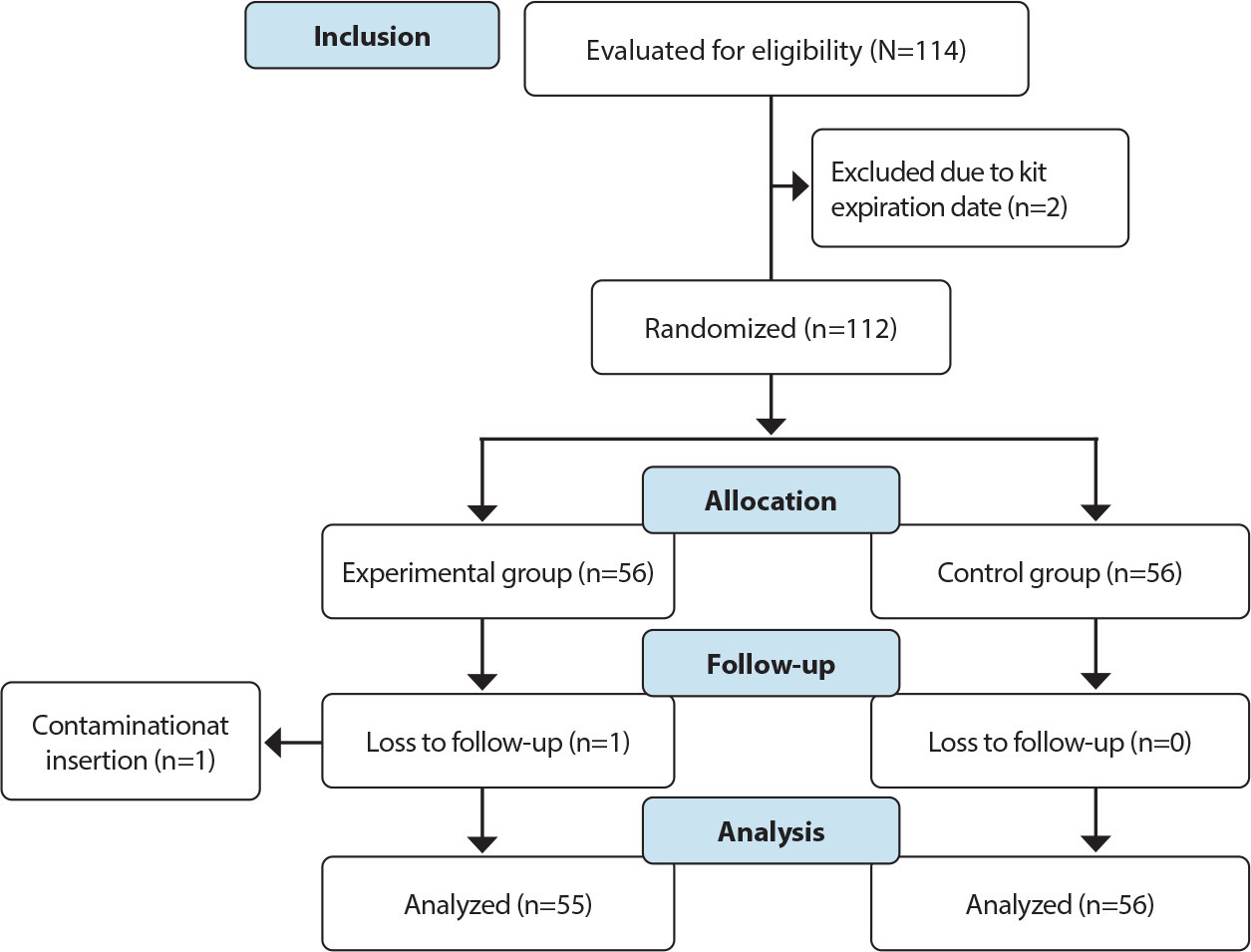
-
ARTÍCULO ORIGINAL
Psychometric analysis of ProQOL-BR in nursing: building hospital safety and protection
Revista Brasileira de Enfermagem. 2024;77(6):e20240085
16/12/2024
Resumo
ARTÍCULO ORIGINALPsychometric analysis of ProQOL-BR in nursing: building hospital safety and protection
Revista Brasileira de Enfermagem. 2024;77(6):e20240085
16/12/2024DOI 10.1590/0034-7167-2024-0085
Visualizações0ABSTRACT
Objectives:
to analyze the psychometric properties of the ProQOL-BR instrument in hospital nursing professionals.
Methods:
a methodological study to validate the ProQOL-BR. Confirmatory factor analysis, assessment of local and global adjustment quality, Pearson hypothesis testing and Cronbach’s alpha internal consistency analysis were used.
Results:
a total of 490 professionals participated. The model presents adequate quality due to factor weights (λ≥ 0.40), acceptable overall fit quality and adequate chi-square ratio and degrees of freedom (χ2/g.1=2.51) for the parameters of CFI (0.923), GFI (0.902), TLI (0.914) and RMSEA (0.042). In terms of validity, it was shown to be adequate with CC=0.89. The internal consistency obtained by standardized Cronbach’s alpha was 0.761. Criterion validity was shown to be favorable with significant correlations (0.001).
Conclusions:
the instrument was validated regarding content, criteria and reliability. Three questions were removed from the original instrument, ProQOL-BR, leaving the final instrument with 25 questions.
Palavras-chave: BurnoutHealth Status IndicatorsNursing StaffQuality of Professional LifeValidation Studies as TopicVer mais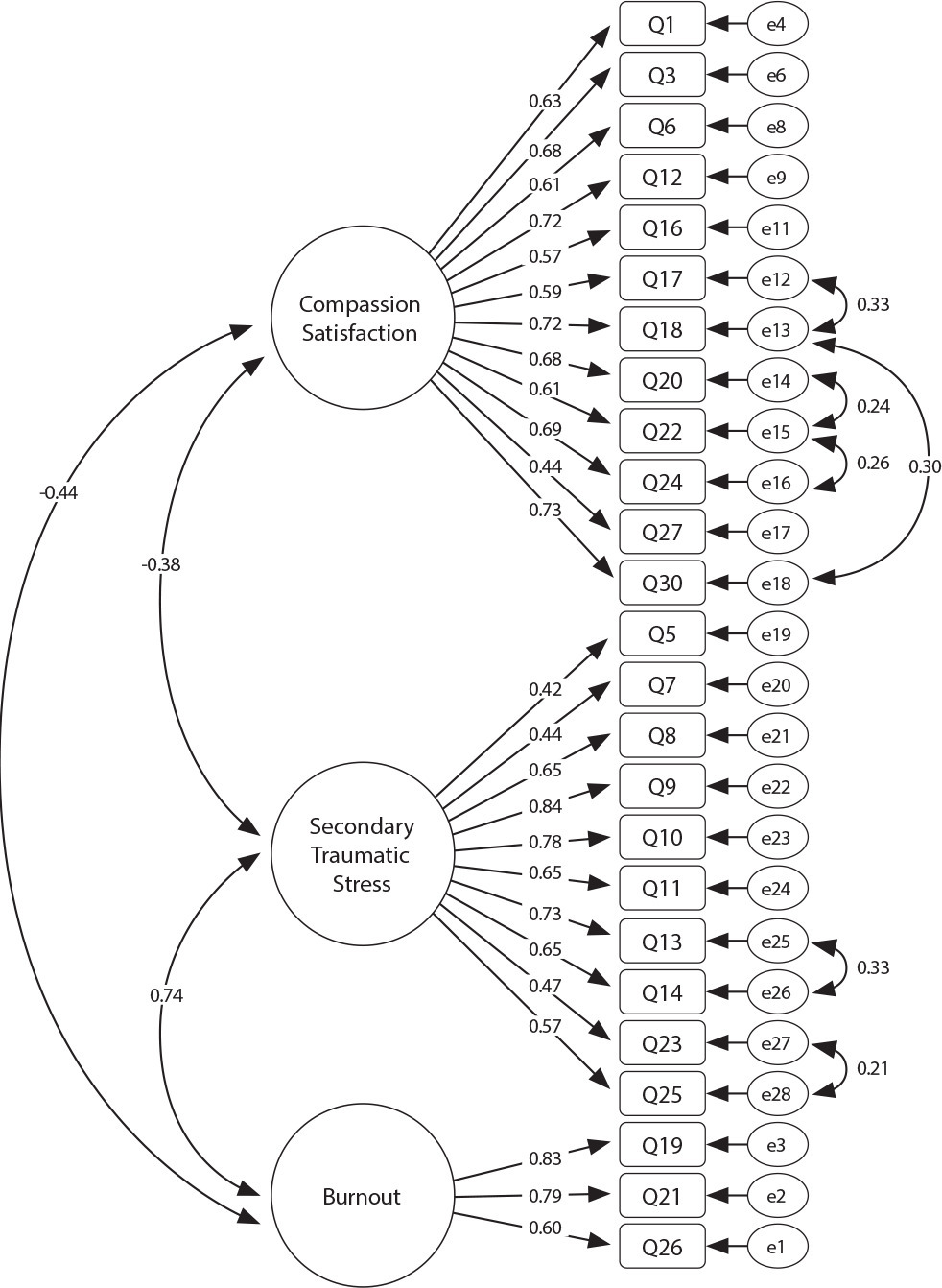
-
ARTÍCULO ORIGINAL
Health literacy development of Primary Health Care patients: qualitative research
Revista Brasileira de Enfermagem. 2024;77(6):e20240154
16/12/2024
Resumo
ARTÍCULO ORIGINALHealth literacy development of Primary Health Care patients: qualitative research
Revista Brasileira de Enfermagem. 2024;77(6):e20240154
16/12/2024DOI 10.1590/0034-7167-2024-0154
Visualizações0ABSTRACT
Objectives:
to identify the process of health literacy development among primary care patients, relating it to their self-care practices.
Methods:
qualitative, prospective research with 22 patients from two Family Health Strategy units. Data were obtained through individual semi-structured interviews, examined through descriptive statistics and thematic content analysis.
Results:
the results discuss how participants learn about health and how this resonates in their behaviors, culminating in two thematic categories: “Health knowledge construction”; and “Dialogue between health knowledge construction and patient care actions”.
Final Considerations:
health knowledge is developed mainly through interpersonal relationships, mediated by health professionals through bonding and communication. Community educational actions and training of health professionals in communication can promote health literacy and self-care among patients.
Palavras-chave: Chronic DiseaseHealth LiteracyPrimary Health CareQualitative ResearchWorld Health OrganizationVer mais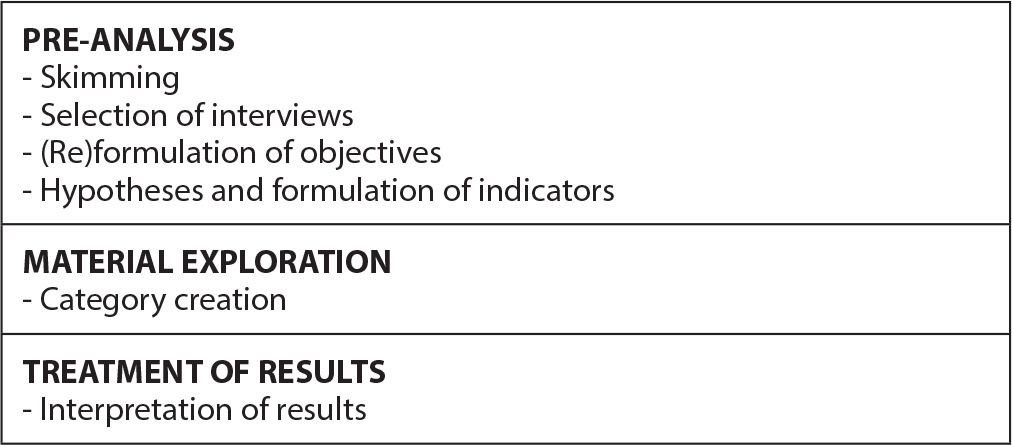
-
ARTÍCULO ORIGINAL
Religión y experiencia profesional: ¿Serán predictores de la inteligencia espiritual de los enfermeros? Estudio transversal
Revista Brasileira de Enfermagem. 2024;77(6):e20240217
16/12/2024
Resumo
ARTÍCULO ORIGINALReligión y experiencia profesional: ¿Serán predictores de la inteligencia espiritual de los enfermeros? Estudio transversal
Revista Brasileira de Enfermagem. 2024;77(6):e20240217
16/12/2024DOI 10.1590/0034-7167-2024-0217es
Visualizações0Ver maisRESUMEN
Objetivos:
analizar la relación entre religión y experiencia profesional con la inteligencia espiritual en enfermeros.
Métodos:
estudio transversal y analítico realizado en 2021, participaron 544 profesionales de enfermería que laboraban en establecimiento de salud de Perú durante la pandemia por COVID-19. Para el análisis de los datos se emplearon el análisis de regresión múltiple y correlación de Pearson.
Resultados:
en los enfermeros predominó un nivel de inteligencia espiritual saludable (42,8%). Quienes no profesaban una religión tenían mayor probabilidad de tener menor puntaje de inteligencia espiritual (escala global y dimensiones); sin embargo, los enfermeros expertos tuvieron mayor probabilidad de tener mayor inteligencia espiritual (escala global y dimensiones) que los enfermeros novatos (p<0,05).
Conclusiones:
la inteligencia espiritual en los enfermeros fue predicha por la religión y la experiencia profesional. Este hallazgo sugiere que la inteligencia espiritual en enfermería se consolida mediante prácticas religiosas y durante el ejercicio profesional.
-
ARTÍCULO ORIGINAL
Conhecimento da equipe de enfermagem sobre cuidados com pacientes com feridas neoplásicas
Revista Brasileira de Enfermagem. 2020;73(1):e20170738
10/02/2020
Resumo
ARTÍCULO ORIGINALConhecimento da equipe de enfermagem sobre cuidados com pacientes com feridas neoplásicas
Revista Brasileira de Enfermagem. 2020;73(1):e20170738
10/02/2020DOI 10.1590/0034-7167-2017-0738
Visualizações0RESUMO
Objetivo:
avaliar o conhecimento da equipe de enfermagem de um hospital oncológico sobre o cuidado de pacientes com Feridas Neoplásicas Malignas (FNM) e analisar fatores sociodemográficos e educacionais associados.
Método:
estudo observacional e transversal, realizado entre setembro e outubro de 2015, após aprovação por Comitê de Ética em Pesquisa. Foi aplicado questionário contendo componentes sociodemográficos, educacionais e relacionados à realização de curativos, escolha de coberturas e orientação. Os dados foram analisados por meio do Teste Qui-Quadrado, Exato de Fisher, Teste t de Student e correlação de Pearson.
Resultados:
participaram do estudo 37 profissonais, sendo a maioria técnicos (56,8%), mulheres (91,9%) e com idade média de 32 anos. Os profissionais apresentaram 56,5% de acertos. Não houve associações estatisticamente significativas entre variáveis sociodemográficas/educacionais e número de acertos.
Conclusão:
observou-se déficit de conhecimentos importantes sobre o cuidado de pacientes com FNM, o que deve nortear estratégias para capacitação das equipes atuantes em Oncologia.
Palavras-chave: Cuidados de EnfermagemEnfermagem OncológicaFerimentos e LesõesGestão do ConhecimentoNeoplasiasVer mais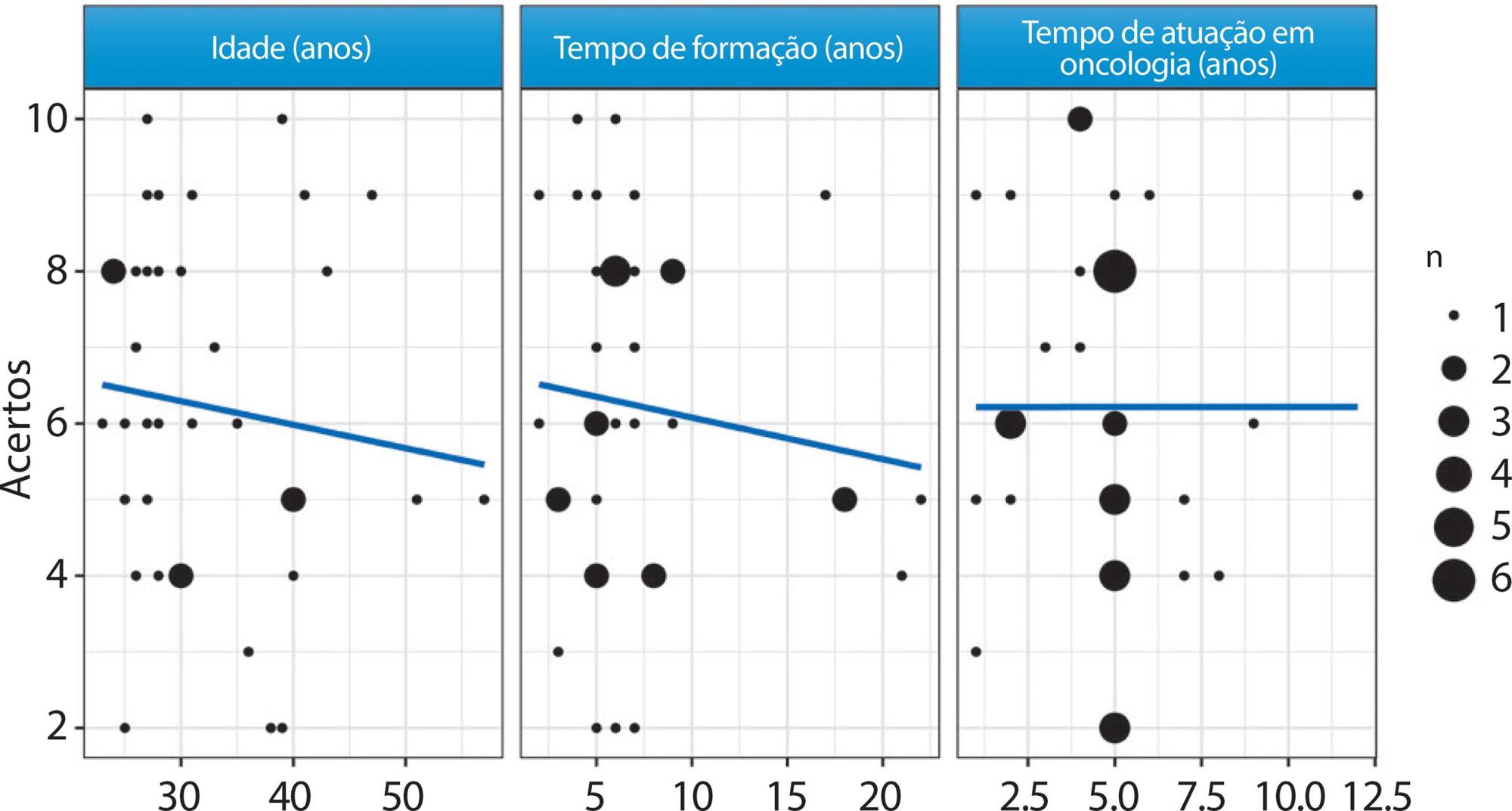
-
ARTÍCULO ORIGINAL
Trend of transplants and organ and tissue donations in Brazil: a time series analysis
Revista Brasileira de Enfermagem. 2021;74(1):e20200058
03/03/2021
Resumo
ARTÍCULO ORIGINALTrend of transplants and organ and tissue donations in Brazil: a time series analysis
Revista Brasileira de Enfermagem. 2021;74(1):e20200058
03/03/2021DOI 10.1590/0034-7167-2020-0058
Visualizações0Ver maisABSTRACT
Objectives:
to indentify the time trend of rates of organs and tissues effective donors, of reports and types of transplanted organs per million people of the Brazilian population.
Methods:
ecological study, of time series, about reports of organ donations and on transplants. The data were provided by the Registro Brasileiro de Transplantes and analyzed using polynomial regression.
Results
an increasing trend was found for potential donors and effective donors, with an average increase of 2.33 and 0.92 per year, respectively. The South Region had the highest rate of potential donors (83.8) and effective donors (34.1) and the North Region, the lowest rate (20.2 and 3.9). The family refusal was the main obstacle to accomplish the donation.
Conclusions
the results show an increasing trend of potential donors and effective donors throughout Brazil, with emphasis on the southern region of the country. Among the main reasons for non-donation, it is worth emphasizing family refusal and medical contraindication prescription.
-
ARTÍCULO ORIGINAL
Costs of healthcare-associated infections in an Intensive Care Unit
Revista Brasileira de Enfermagem. 2021;74(1):e20200275
24/03/2021
Resumo
ARTÍCULO ORIGINALCosts of healthcare-associated infections in an Intensive Care Unit
Revista Brasileira de Enfermagem. 2021;74(1):e20200275
24/03/2021DOI 10.1590/0034-7167-2020-0275
Visualizações0Ver maisABSTRACT
Objectives:
to evaluate hospitalization costs of patients with and without Healthcare-Associated Infections an Intensive Care Unit.
Methods:
a retrospective case-control study. Data collection was retrieved from the medical records of Intensive Care Unit of a medium-sized public hospital in Goiás-Brazil. For each case, two controls were selected. Data on socioeconomic, clinical, and hospital costs were collected. To verify associations between variables, Odds Ratio and linear regression were calculated.
Results:
a total of 21 patients diagnosed with Healthcare-Associated Infections and 42 controls were evaluated. The hospitalization cost for patients with infection was four times higher than for non-infection patients (p-value<0.001). There was an association between infection and higher mortality (p-value <0.001), longer hospital-stay (p-value =0.021), and higher hospital costs (p-value =0.007).
Conclusions:
hospitalization costs of diagnosed Healthcare-Associated Infections patients are high compared to those who do not have this diagnosis.
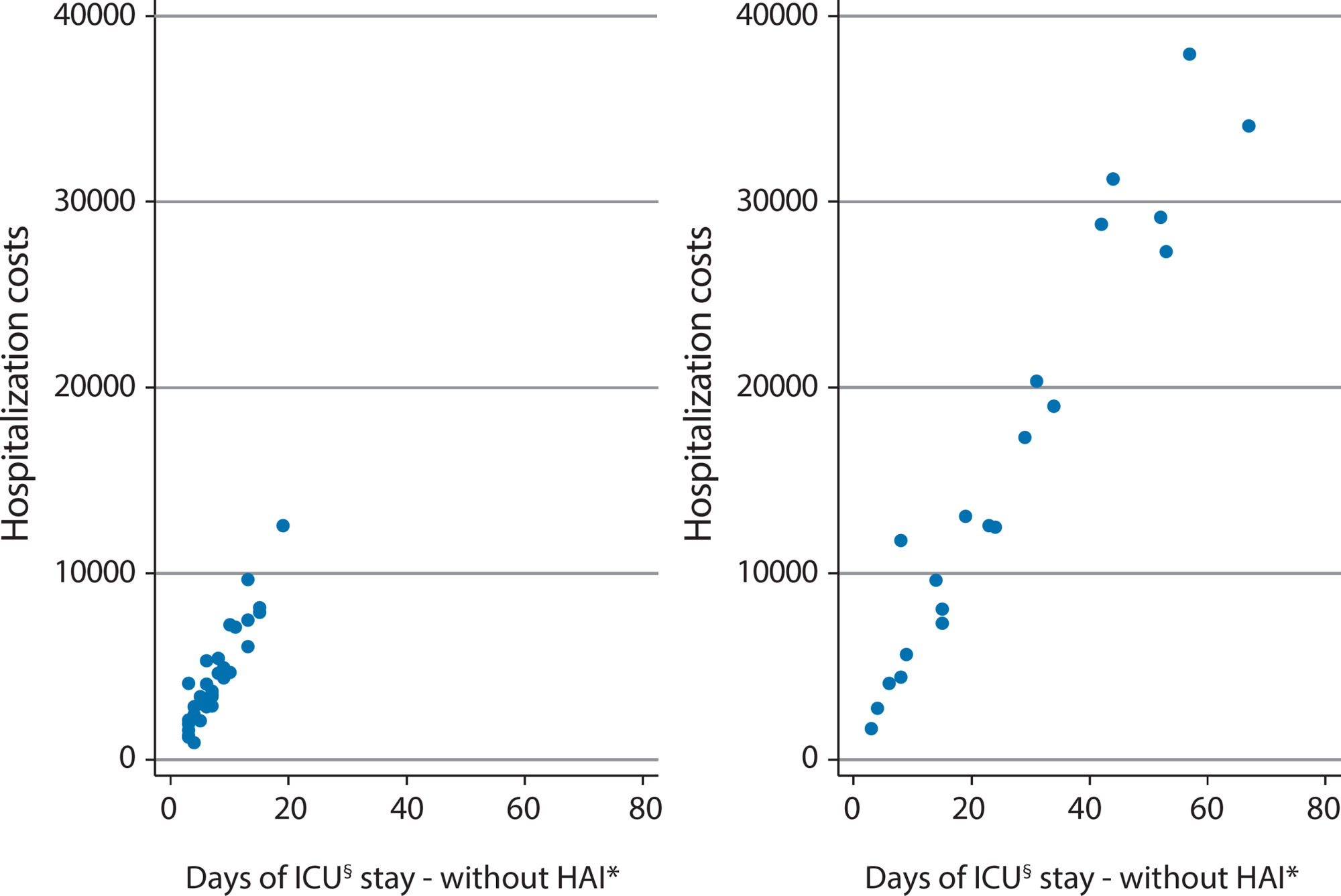
-
ARTÍCULO ORIGINAL
Suffering and defense in work in a mental health care service
Revista Brasileira de Enfermagem. 2019;72(4):903-909
19/08/2019
Resumo
ARTÍCULO ORIGINALSuffering and defense in work in a mental health care service
Revista Brasileira de Enfermagem. 2019;72(4):903-909
19/08/2019DOI 10.1590/0034-7167-2018-0140
Visualizações0ABSTRACT
Objective:
to know the suffering and the strategies of defense of CAPS AD III workers, from the perspective of the Work Theater proposed by Dejours.
Method:
a descriptive qualitative research, of the case study type, with CAPS AD III workers, using as theoretical framework the Psychodynamics of Work.
Results:
CAPS AD III professionals identify that the suffering in the work arises from the frustration between the real and the prescribed one; by the hegemony of practices guided by the biomedical model; stigmatization and prejudice with users; and the limitations of the Health Care Network (Rede de Atenção à Saúde). As an individual defense strategy, the rationalization was defined, and as a collective strategy, the protection strategy.
Final considerations:
worker uses strategies of defenses to face suffering and give a new meaning to it, characterizing themselves as ways of apprehending, understanding and giving meaning and new looks to their work.
Palavras-chave: Adaptation, PsychologicalHealth ServicesMental HealthOccupational HealthPsychological StressVer mais -
REFLEXIÓN
Eficiência da limpeza e desinfecção de superfícies clínicas: métodos de avaliação
Revista Brasileira de Enfermagem. 2020;73(1):e20180623
10/02/2020
Resumo
REFLEXIÓNEficiência da limpeza e desinfecção de superfícies clínicas: métodos de avaliação
Revista Brasileira de Enfermagem. 2020;73(1):e20180623
10/02/2020DOI 10.1590/0034-7167-2018-0623
Visualizações0RESUMO
Objetivo:
Discutir os métodos empregados para avaliar a eficiência da limpeza e desinfecção (L&D) de superfícies clínicas.
Método:
Trata-se de uma reflexão teórica fundamentada em estudos científicos e experiência dos autores. Foram abordados o conhecimento e as lacunas atuais, a necessidade de futuras investigações e a prática na utilização dos métodos.
Resultados:
São quatro os principais métodos utilizados para avaliar a eficiência da L&D de superfícies clínicas: inspeção visual, marcadores fluorescentes, culturas microbiológicas e teste de adenosina trifosfato por bioluminescência. Os dois primeiros são utilizados para avaliar o processo e preveem a adesão aos protocolos pela equipe, enquanto os dois últimos são empregados para avaliar os resultados, portanto, mais relevantes na avaliação do risco de infecção.
Considerações finais:
Não foi encontrado um método ideal, pois todos apresentaram limitações. São necessárias estratégias que potencializem a precisão desses métodos.
Palavras-chave: Avaliação de Processos (Cuidados de Saúde)Contaminação de EquipamentosDesinfecçãoInfecção HospitalarServiço Hospitalar de LimpezaVer mais -
ARTÍCULO ORIGINAL
Estratégias de enfrentamento, preocupações e hábitos de homens brasileiros no contexto da pandemia da COVID-19
Revista Brasileira de Enfermagem. 2021;74:e20210040
12/07/2021
Resumo
ARTÍCULO ORIGINALEstratégias de enfrentamento, preocupações e hábitos de homens brasileiros no contexto da pandemia da COVID-19
Revista Brasileira de Enfermagem. 2021;74:e20210040
12/07/2021DOI 10.1590/0034-7167-2021-0040
Visualizações0Ver maisRESUMO
Objetivo:
Descrever estratégias de enfrentamento, preocupações e hábitos de homens brasileiros durante a pandemia da COVID-19.
Método:
Estudo transversal, descritivo e de abrangência nacional, que foi realizado em 2020 com 1.015 homens residentes no Brasil. Empregou-se estatística descritiva.
Resultados:
Predominaram jovens (41,2%), negros (61,4%), com alta escolaridade (66,8%), alta renda (33,2%), residentes com familiares/amigos(as) (49,7%) e trabalhadores formais (65,6%). Como estratégias de enfrentamento predominaram: uso exclusivo do sistema privado de saúde (36,4%), suporte de familiares/amigos(as) (78,2%) e atividades de lazer (97,7%) e domésticas (64,9%). Distanciamento social (59,7%), situações econômica (58,0%) e de trabalho (44,4%) foram os principais motivos de preocupação. Dentre as atitudes de prevenção/controle prevaleceram a lavagem das mãos (94,3%) e o distanciamento social (91,0%). Consumo de mídias (84,6%) e de risco à saúde (65,4%) foram os principais hábitos aumentados.
Conclusão:
Homens brasileiros adotaram estratégias de enfrentamento recomendadas pelas autoridades sanitárias, com preocupações e hábitos de potencial risco à saúde física e mental.
-
ARTÍCULO ORIGINAL
Atitudes, conhecimentos e habilidades para o trabalho do enfermeiro no Parque Indígena do Xingu
Revista Brasileira de Enfermagem. 2020;73(6):e20190632
07/09/2020
Resumo
ARTÍCULO ORIGINALAtitudes, conhecimentos e habilidades para o trabalho do enfermeiro no Parque Indígena do Xingu
Revista Brasileira de Enfermagem. 2020;73(6):e20190632
07/09/2020DOI 10.1590/0034-7167-2019-0632
Visualizações0RESUMO
Objetivo:
analisar as atitudes, conhecimentos e habilidades que compõem a competência profissional dos enfermeiros para o trabalho nos territórios indígenas.
Método:
estudo exploratório-descritivo com abordagem qualitativa realizado com enfermeiros atuantes no Parque Indígena do Xingu em 2016. Os dados foram obtidos por meio de entrevistas semiestruturadas e tratados conforme método da análise temático-categorial.
Resultados:
a atuação do enfermeiro no Parque Indígena do Xingu é definida pela interculturalidade e pelas especificidades do território e da organização do serviço. O trabalho tem caráter multifacetado. Habilidades técnicas, conhecimentos da antropologia e atitudes facilitadoras de uma interlocução respeitosa com a diferença cultural compõem a competência profissional para atuação neste contexto.
Considerações finais:
o trabalho da saúde nos territórios indígenas abriga especificidades e demanda dos enfermeiros uma prática profissional singular marcada pela aquisição de novos conhecimentos, atitudes e desenvolvimento de habilidades orientadas para a dimensão intercultural do trabalho em saúde.
Palavras-chave: Atenção Primária à SaúdeCompetência ProfissionalEnfermagemSaúde de Populações IndígenasTrabalhoVer mais -
ARTÍCULO ORIGINAL
Effect of first aid training on teams from special education schools
Revista Brasileira de Enfermagem. 2020;73(2):e20180288
17/02/2020
Resumo
ARTÍCULO ORIGINALEffect of first aid training on teams from special education schools
Revista Brasileira de Enfermagem. 2020;73(2):e20180288
17/02/2020DOI 10.1590/0034-7167-2018-0288
Visualizações0Ver maisABSTRACT
Objectives:
Analyze the effect of first aid training on the knowledge of multidisciplinary teams from special education schools, in school accidents.
Methods:
A quasi-experimental, before-and-after study with a single comparison group. Descriptive statistics and McNemar’s test were used to evaluate the effect of the intervention.
Results:
This study had the participation of 162 higher education professionals, predominantly teachers (82.1%), female (97.5%), aged over 40 (69.2%). An increase in correct answers was observed, with statistical significance (≤0.05), especially in proper handling in case of fall with traumatic brain injury, electric shock, and burn due to hot liquid (98.1%, 98.1% and 96.9% of proper response, respectively).
Conclusions:
First aid training for child accidents, through content exhibition, in a dialogical and practical way, proved to be efficient for multidisciplinary teams from special education schools for people with disabilities.
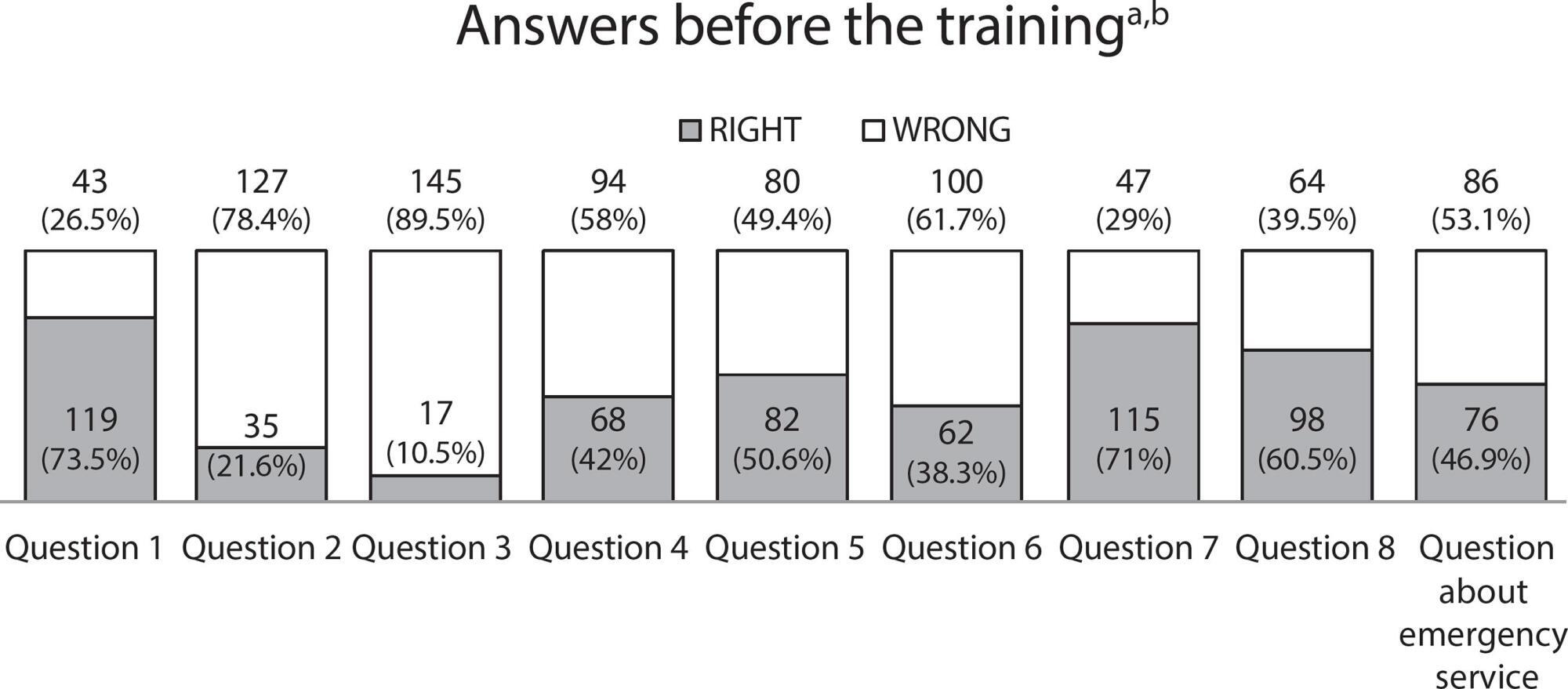
Búsqueda
Buscar en:
Nuvem de Tags
Adolescente (85) Atenção Primária à Saúde (239) COVID-19 (91) Criança (91) Cuidados de Enfermagem (269) Educação em Enfermagem (151) Educação em Saúde (139) Enfermagem (930) Enfermagem Pediátrica (86) Estudantes de Enfermagem (77) Estudos de Validação (131) Família (87) Idoso (208) Promoção da Saúde (99) Qualidade de Vida (104) Saúde do Trabalhador (86) Saúde Mental (145) Saúde Pública (82) Segurança do Paciente (150) Tecnologia Educacional (100)



